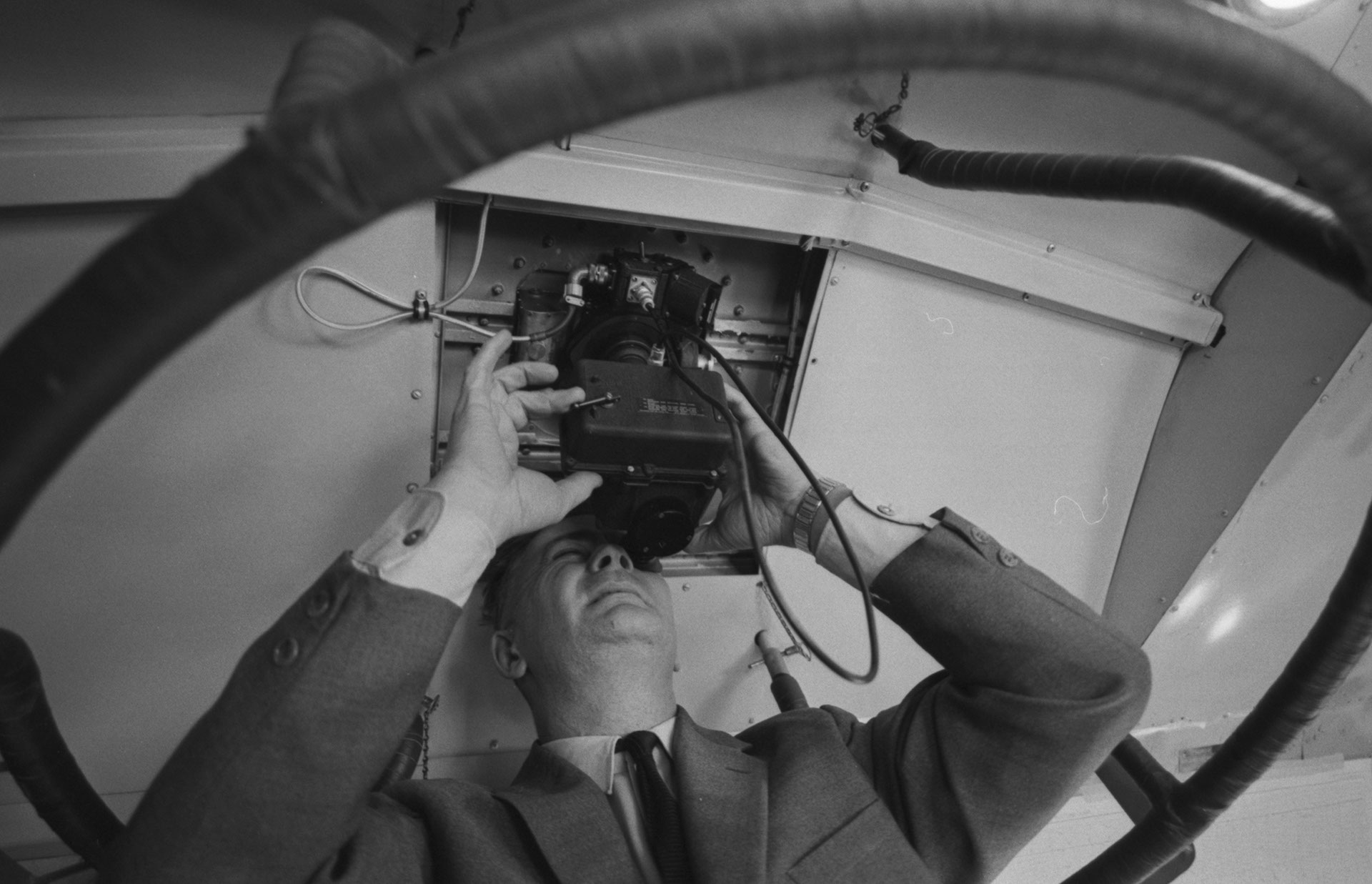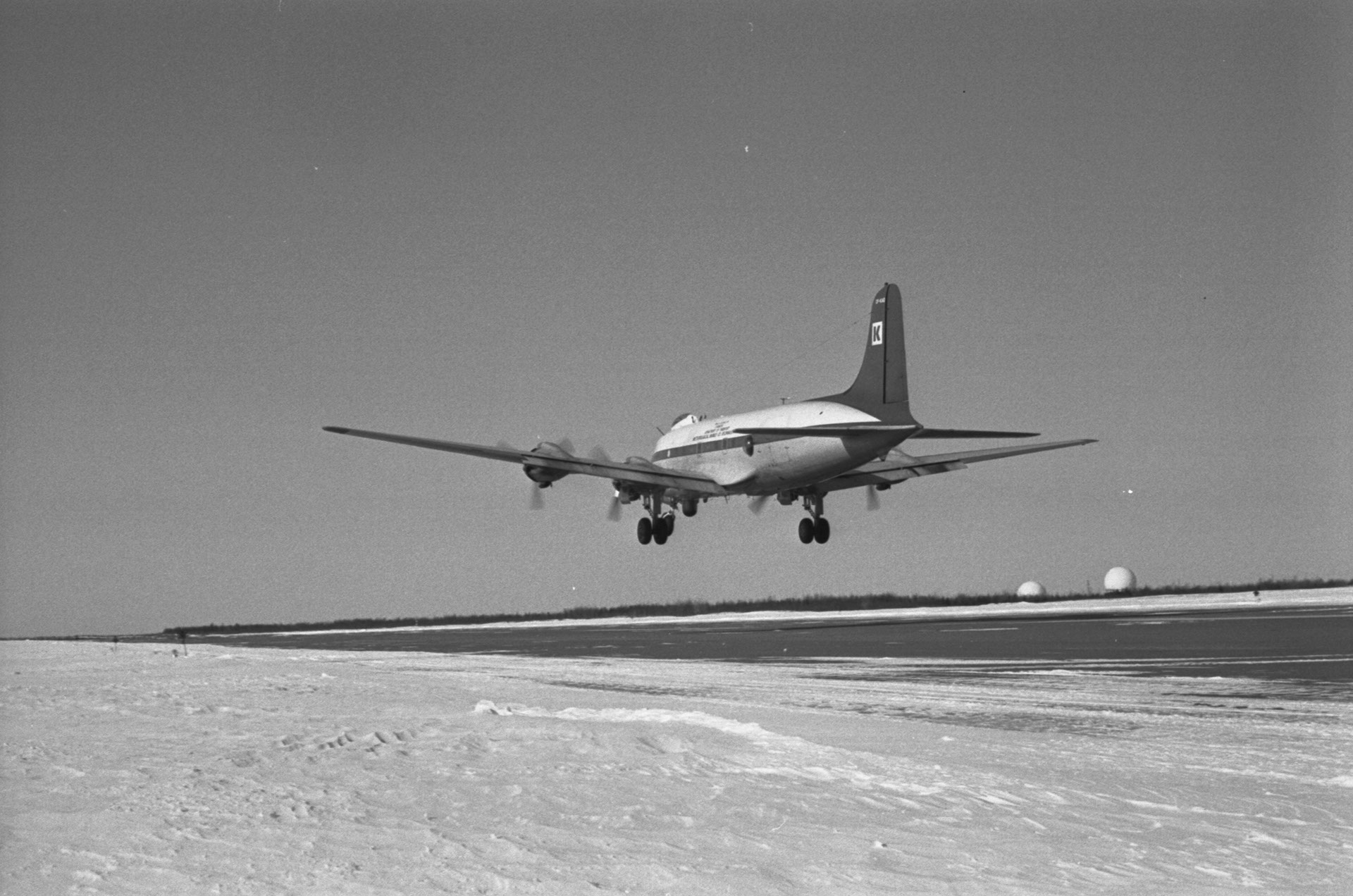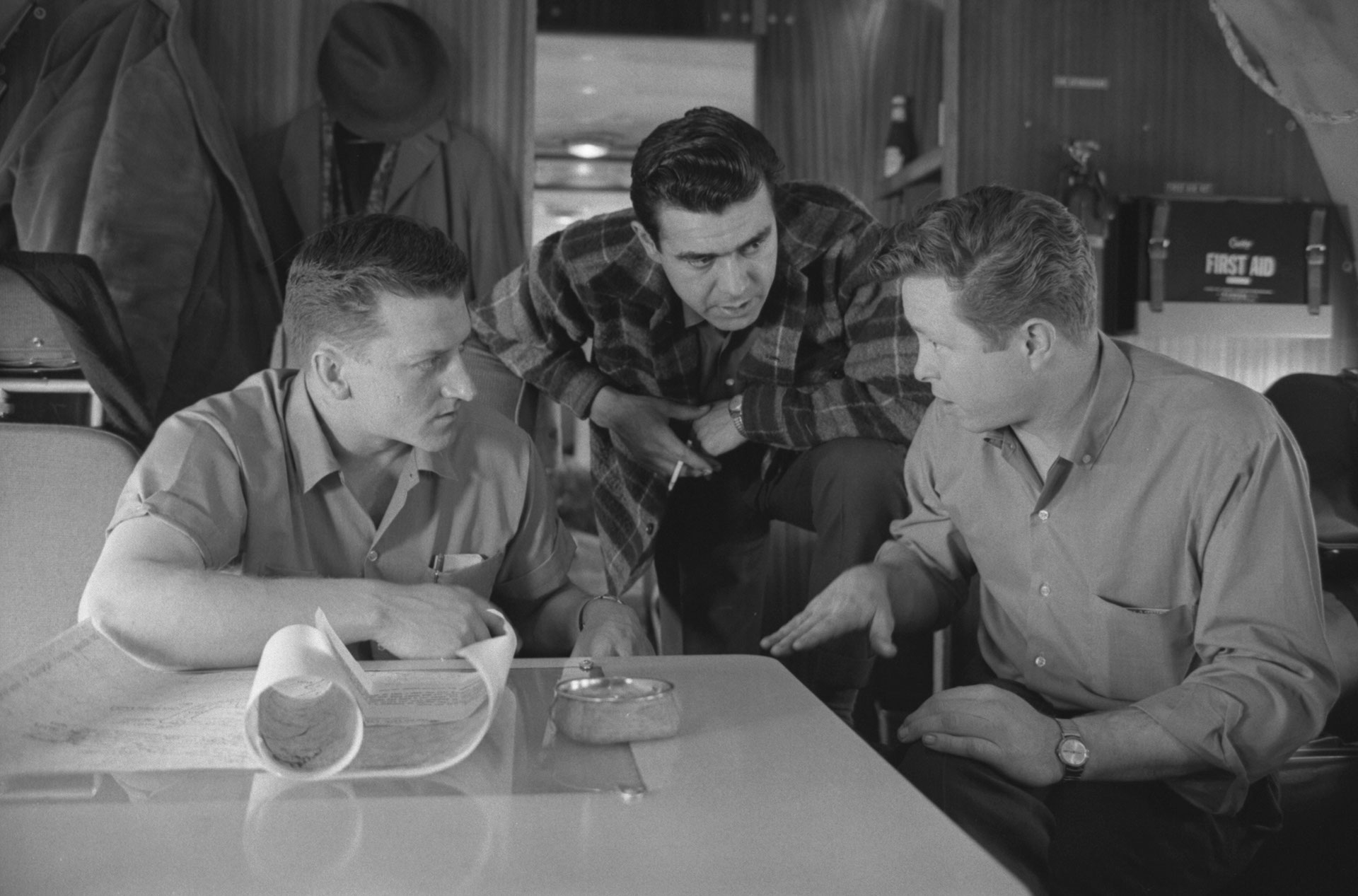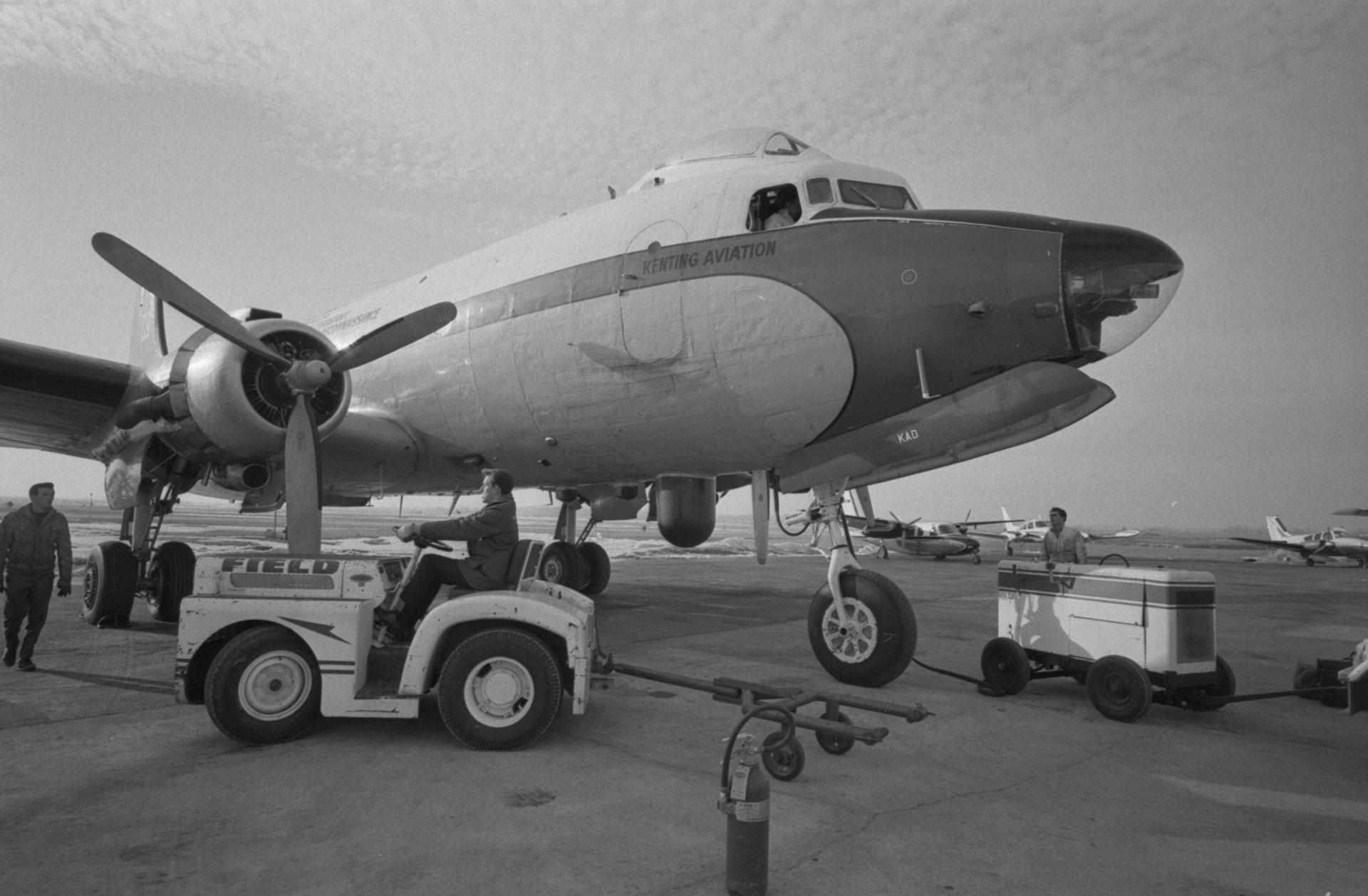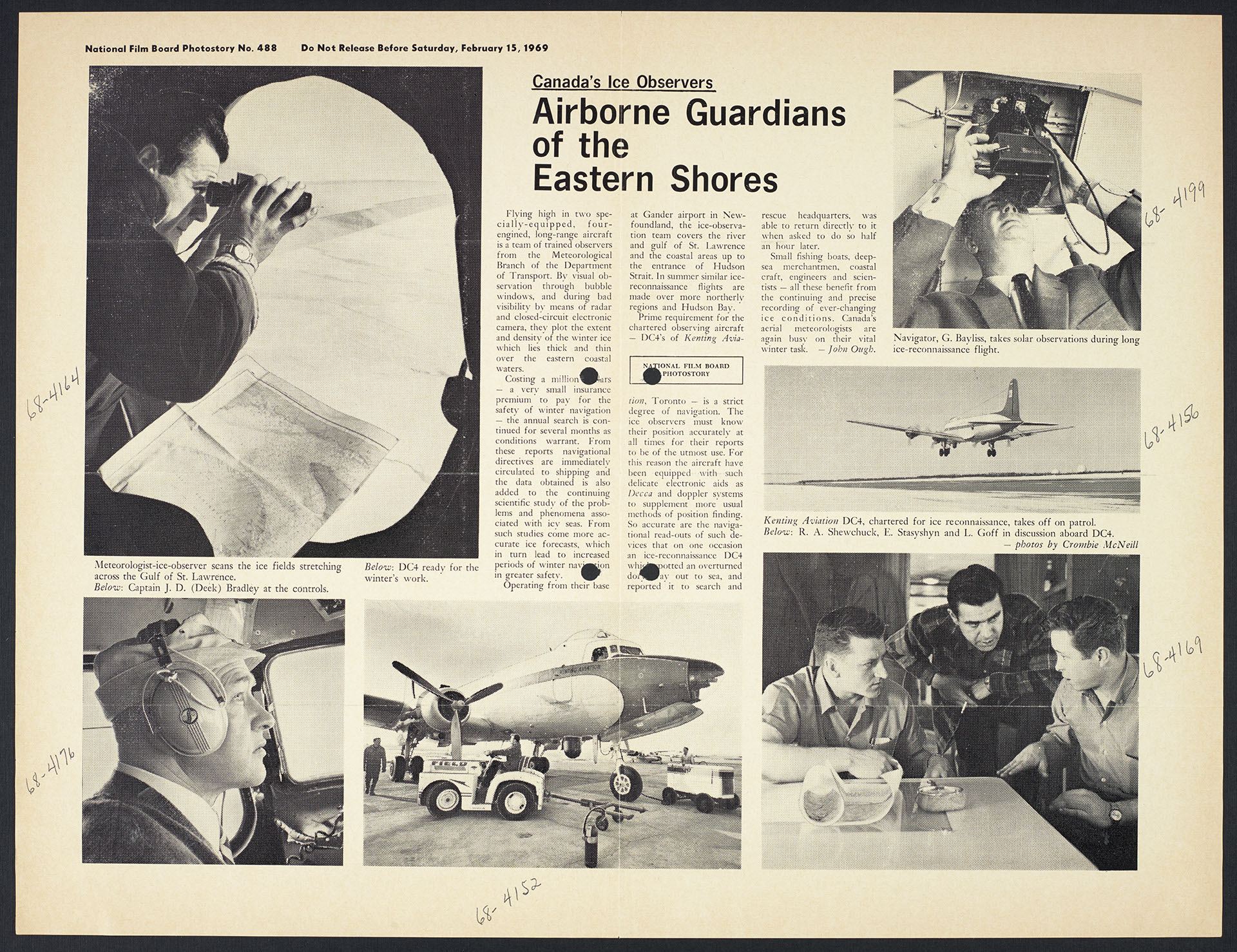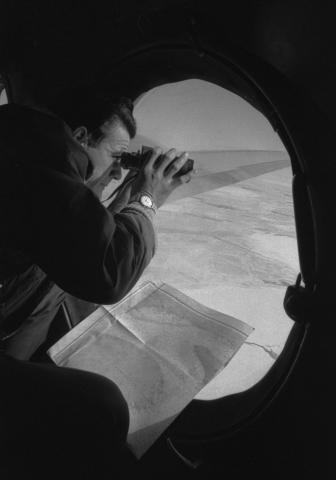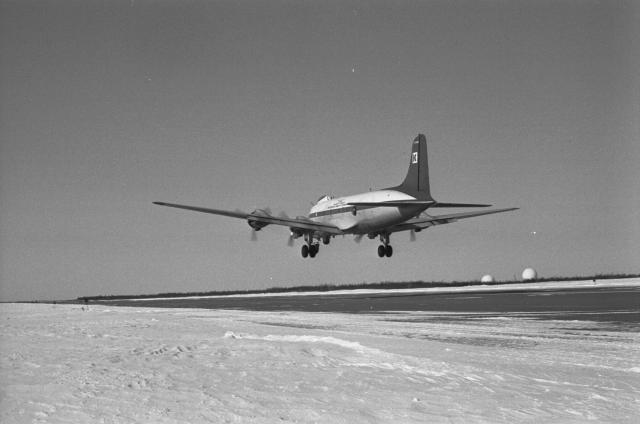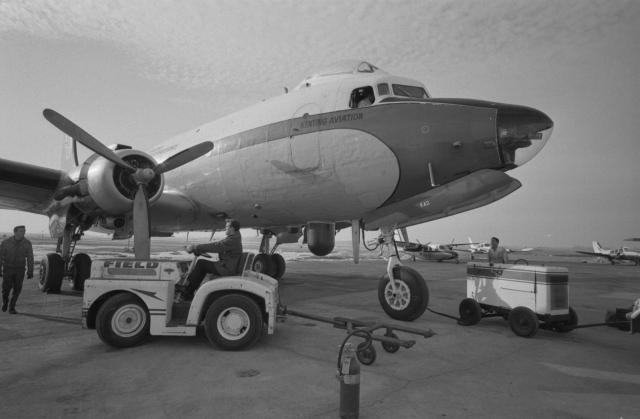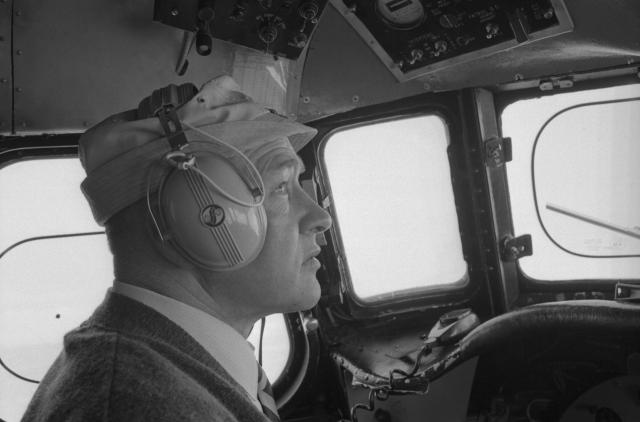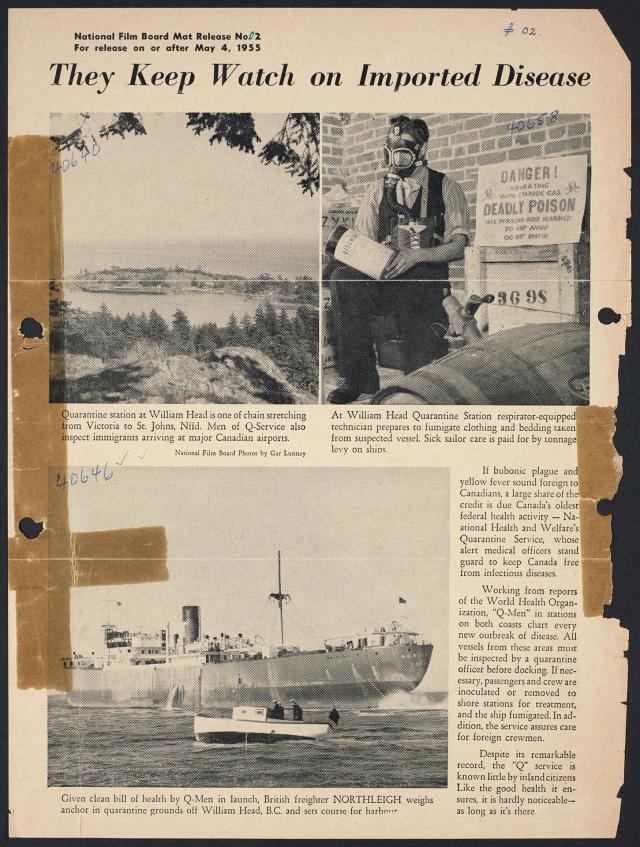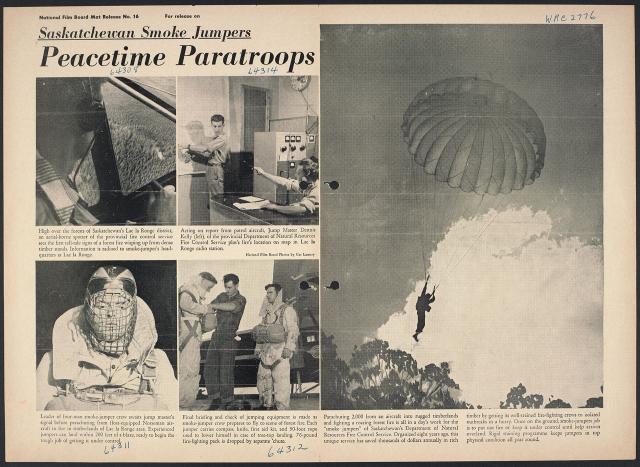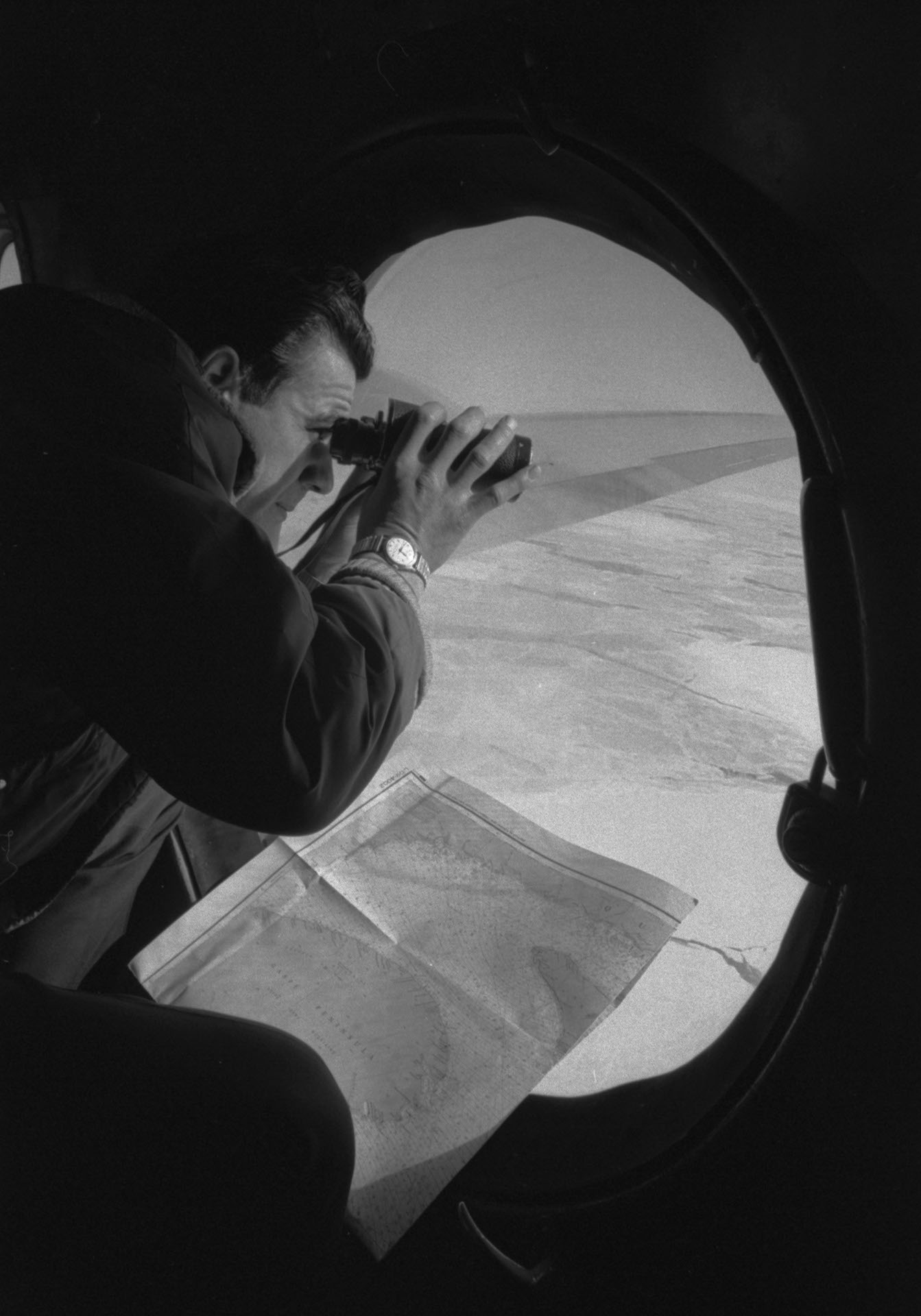
Photostory #488: Canada's Ice Observers: Airborne Guardians of the Eastern Shores
Photographers
Maker
National Film Board of Canada
Release Date
February 15, 1969
Collection
CMCP fonds
Credit Line
Canadian Museum of Contemporary Photography fonds, National Gallery of Canada Library and Archive
Main Text
Flying high in two specially-equipped, four-engined, long-range aircraft is a team of trained observers from the Meteorological Branch of the Department of Transport. By visual observation through bubble window, and during bad visibility by means of radar and closed-circuit electronic camera, they plot the extent and density of the winter ice which lies thick and thin over the eastern coastal waters. Costing a million dollars - a very small insurance premium to pay for the safety of winter navigation - the annual search is continued for several months as conditions warrant. From these reports navigational directives are immediately circulated to shipping and the data obtained is also added to the continuing scientific study of the problems and phenomena associated with icy seas. From such studies come more accurate ice forecasts, which in turn lead to increased periods of winter navigation in greater safety. Operating from their base at Gander airport in Newfoundland, the ice-observation team covers the river and gulf of St. Lawrence and the coastal areas up to the entrance of Hudson Strait. In summer similar ice-reconnaissance flights are made over more northerly regions and Hudson Bay. Prime requirement for the chartered observing aircraft - DC4's of Kenting Aviation, Toronto - is a strict degree of navigation. The ice observers must know their position accurately at all times for their reports to be of the utmost use. For this reason the aircraft have been equipped with such delicate electronic aids as Decca and doppler systems to supplement more usual methods of position finding. So accurate are the navigational read-outs of such devices that on one occasion an ice-reconnaissance DC4 which spotted an overturned dory way out to sea, and reported it to search and rescue headquarters, was able to return directly to it when asked to do so half an hour later. Small fishing boats, deep-sea merchantmen, coastal craft, engineers and scientists - all these benefit from the continuing and precise recording of ever-changing ice conditions. Canada's aerial meteorologists are again busy on their vital winter task.
Subjects:
Locations:

